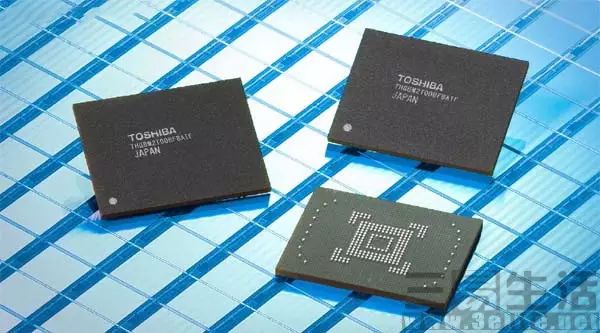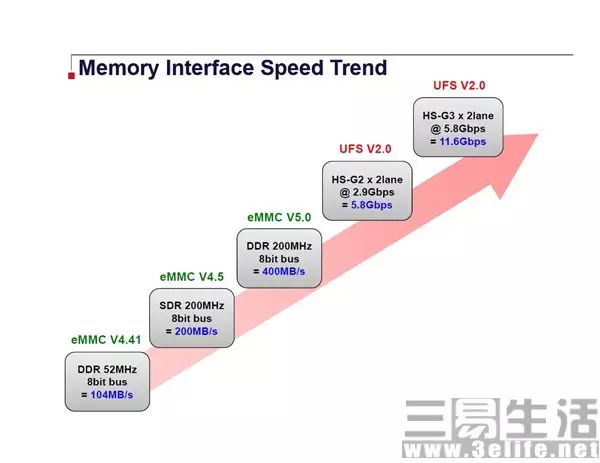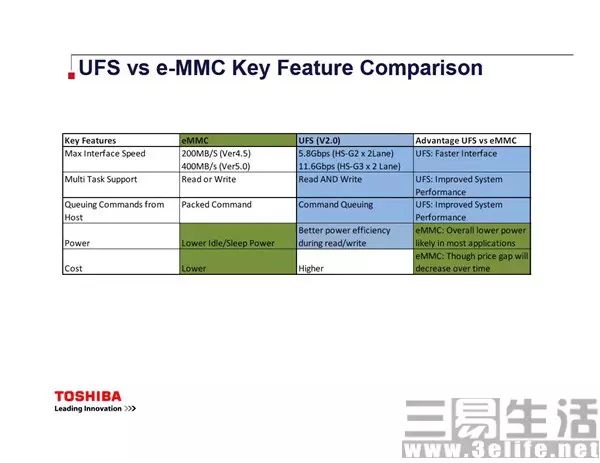
In 2016, the configuration of Android phones was upgraded to a new level, featuring the Snapdragon 820, 4GB of RAM, and storage capacity soaring to 128GB. A small detail here is that it adopted UFS 2.0 flash memory instead of the previously popular eMMC 5.1. So, what exactly is UFS 2.0 flash memory? Why are brands like Samsung, LeEco, Lenovo, and Xiaomi using it? What are the disadvantages of eMMC 5.1 that led to its replacement by UFS 2.0? Below, I will provide a brief overview and analyze these two different flash storage specifications.

eMMC
The full name of eMMC is “embedded Multi Media Card”, which translates to “嵌入式多媒体存储卡” in Chinese. It is a standard specification for embedded storage primarily aimed at products like smartphones or tablets, established by the MMC Association.
One obvious advantage of eMMC is that it integrates a controller within the package, providing a standard interface and managing the flash memory. eMMC utilizes its integration of the main controller and flash memory chips into a small BGA package. Before 2015, all mainstream smartphones and tablets adopted this storage medium. As multimedia storage cards replaced compact flash memory as the storage medium for mobile devices, new versions have been continuously released, with increasing speeds. For example, eMMC 4.4 has a read speed of about 104MB/s, while eMMC 4.5 reaches 200MB/s. In July 29, 2013, Samsung began mass production of the industry’s first eMMC 5.0 storage product, which had a read speed of 400MB/s, and the latest eMMC 5.1 specification has a theoretical bandwidth of around 600MB/s.

UFS
In 2011, the Joint Electron Device Engineering Council (JEDEC) released the first generation of Universal Flash Storage (UFS) standards, which is the predecessor of UFS 2.0. It aimed to replace eMMC, but unfortunately, it was not popular because it seemed to have no advantages over the continuously updated eMMC.

After two years of development, JEDEC released the new generation of flash storage standard, UFS 2.0, in September 2013. The theoretical read and write speeds of UFS 2.0 flash memory can reach 1400MB/s, which not only has a significant advantage over eMMC but also makes it inferior to SSDs used in computers. Therefore, UFS 2.0 has better development prospects and is expected to become the mainstream configuration for future mobile devices. Devices like the Samsung Galaxy S7, Xiaomi 5, Le Max 2, and OnePlus 3 are using UFS 2.0. In March of this year, JEDEC released UFS 2.1, an iterative version of UFS 2.0 that made some improvements over the earlier version, further enhancing its advantages.
Of course, although UFS 2.0 has many advantages, it has not been in development for long, and its manufacturing process is slightly behind that of eMMC 5.1, making it unable to achieve widespread adoption in terms of production capacity. Currently, only flagship models are equipped with this flash specification, so for the next two years, eMMC will still dominate the market. However, it is reassuring that in two years, mobile flash memory will definitely be dominated by the more promising UFS.
